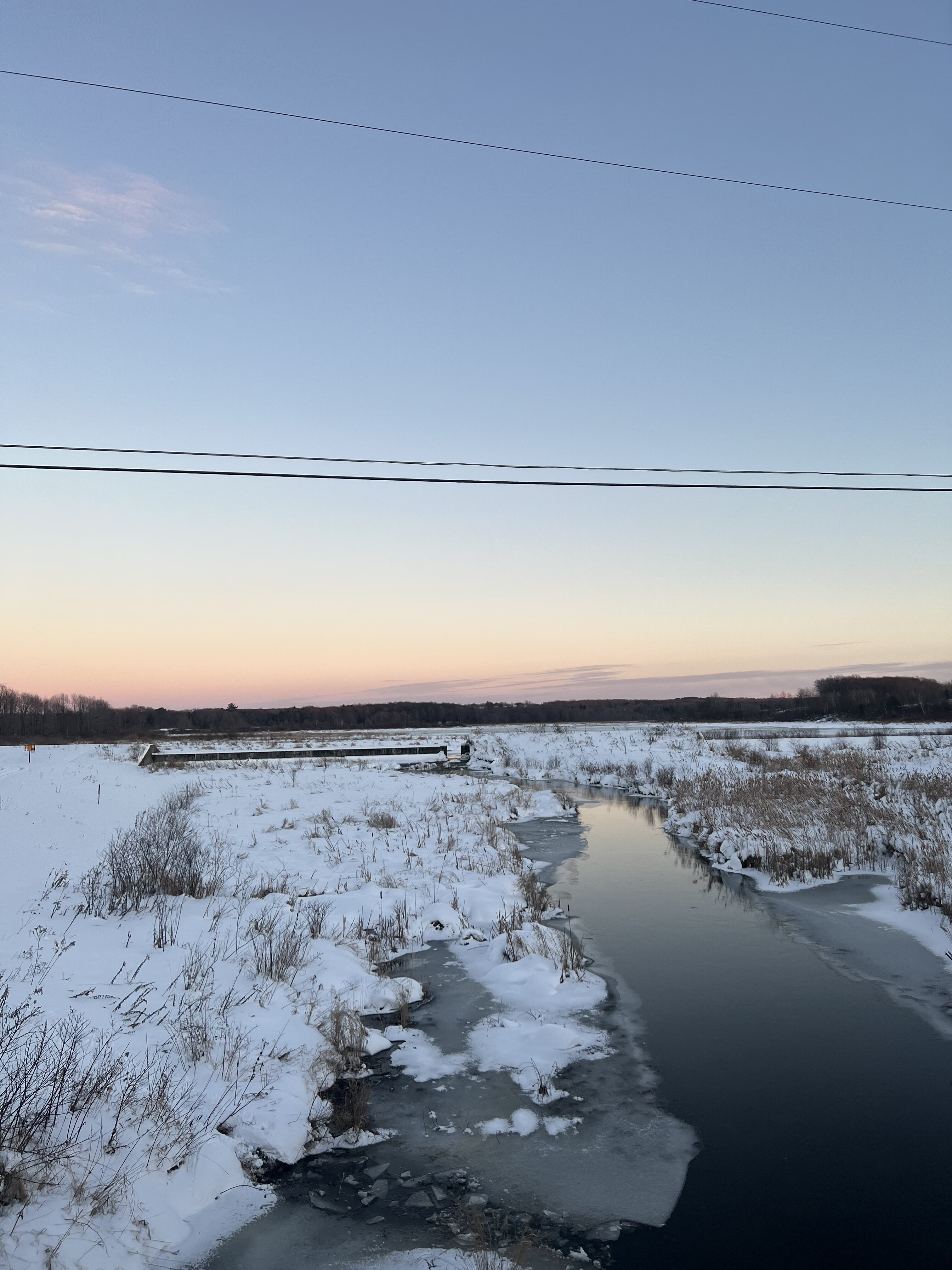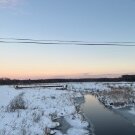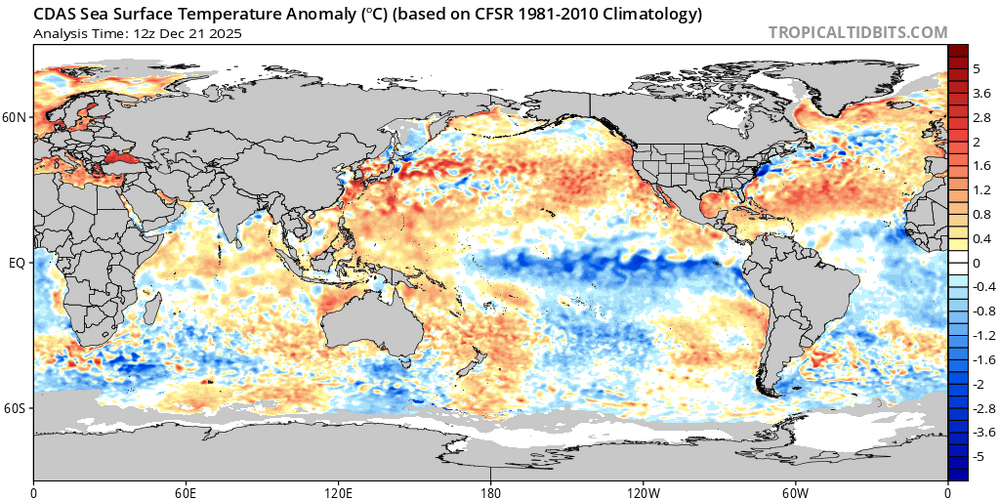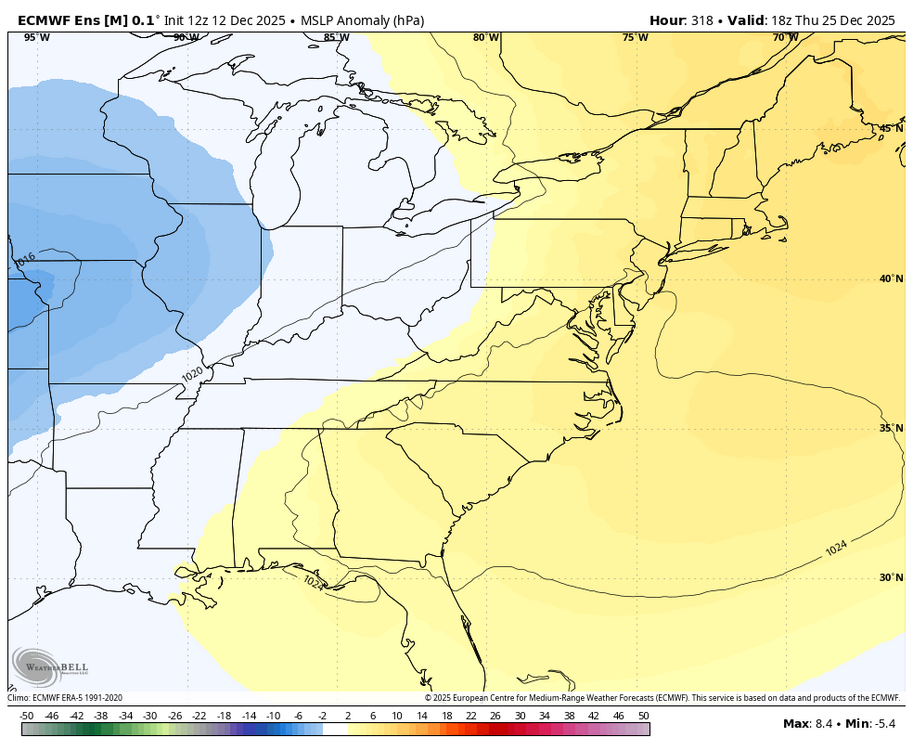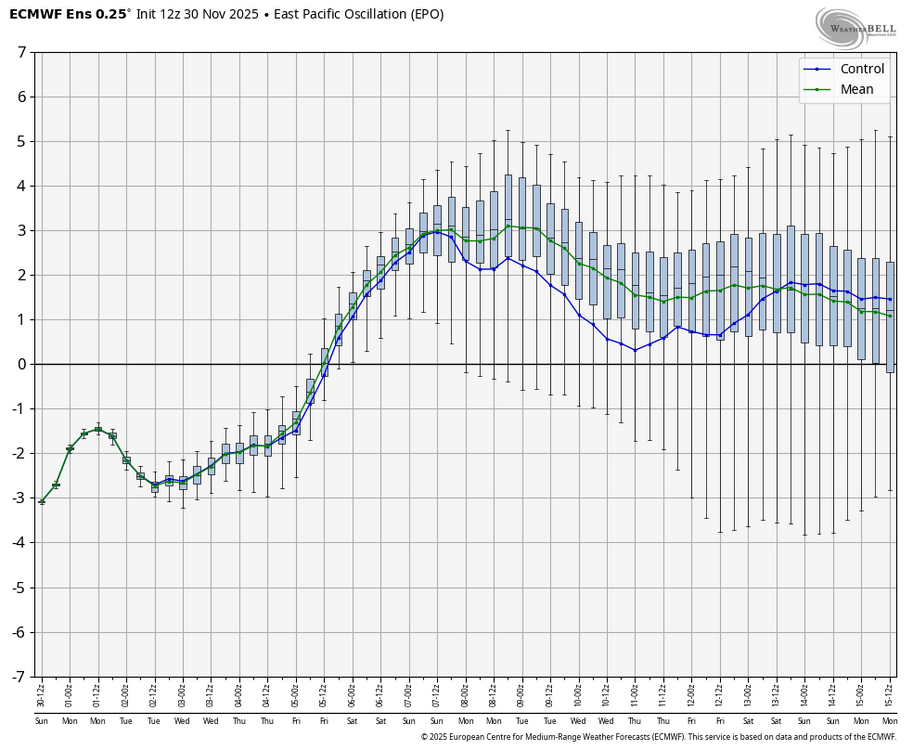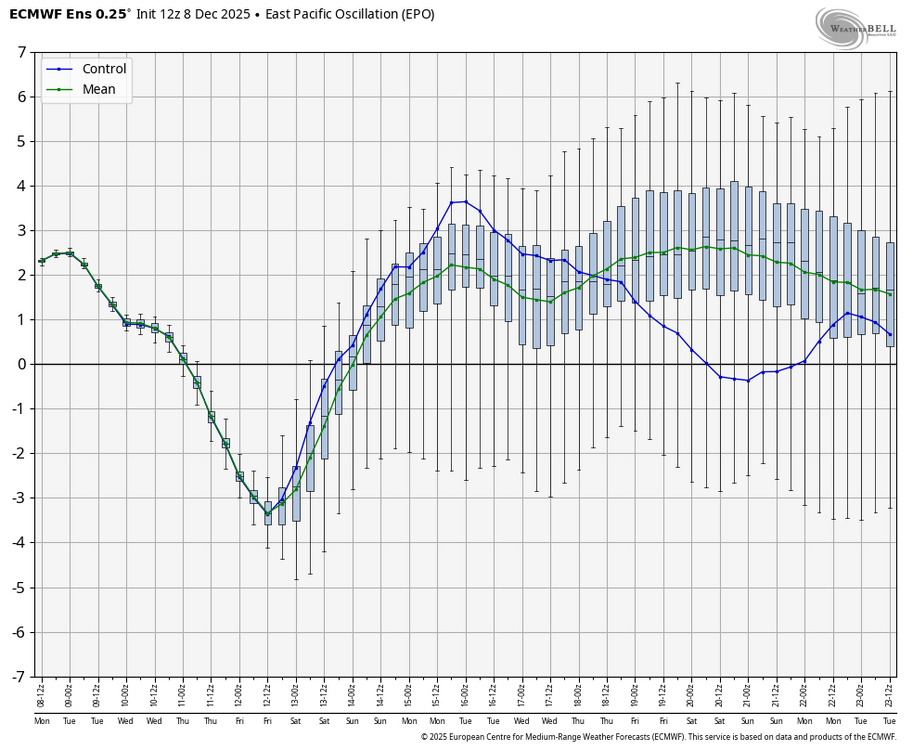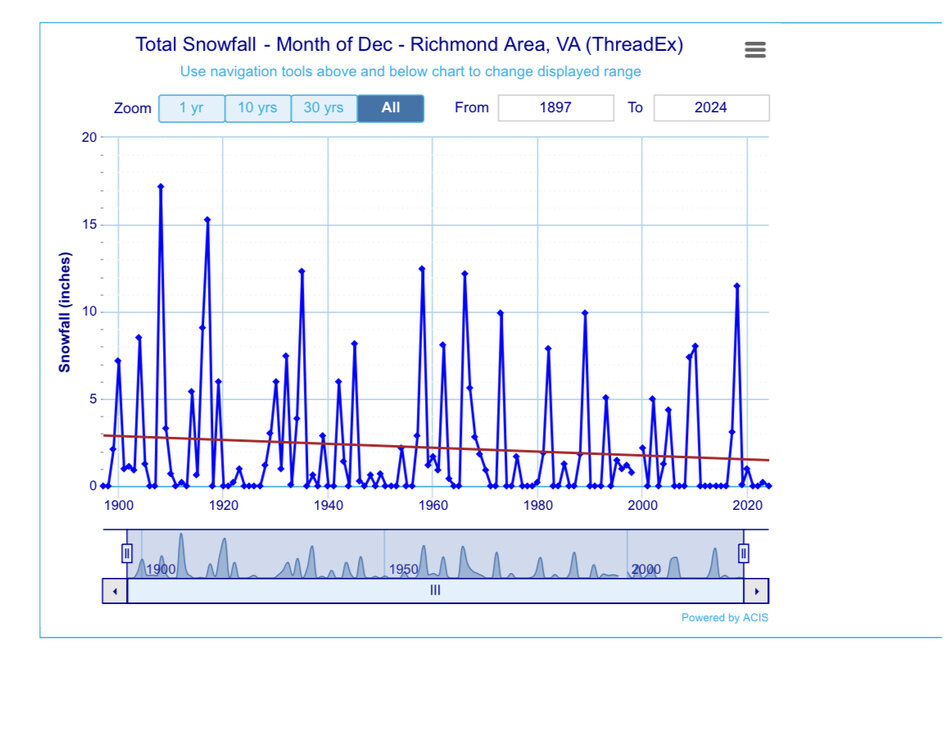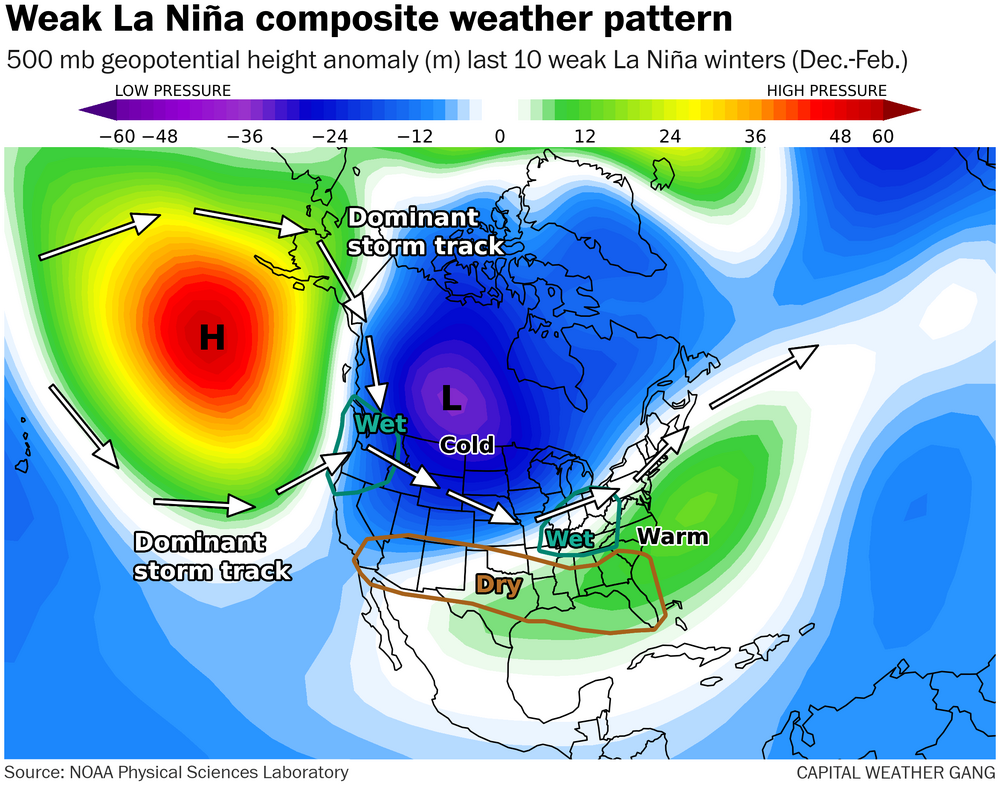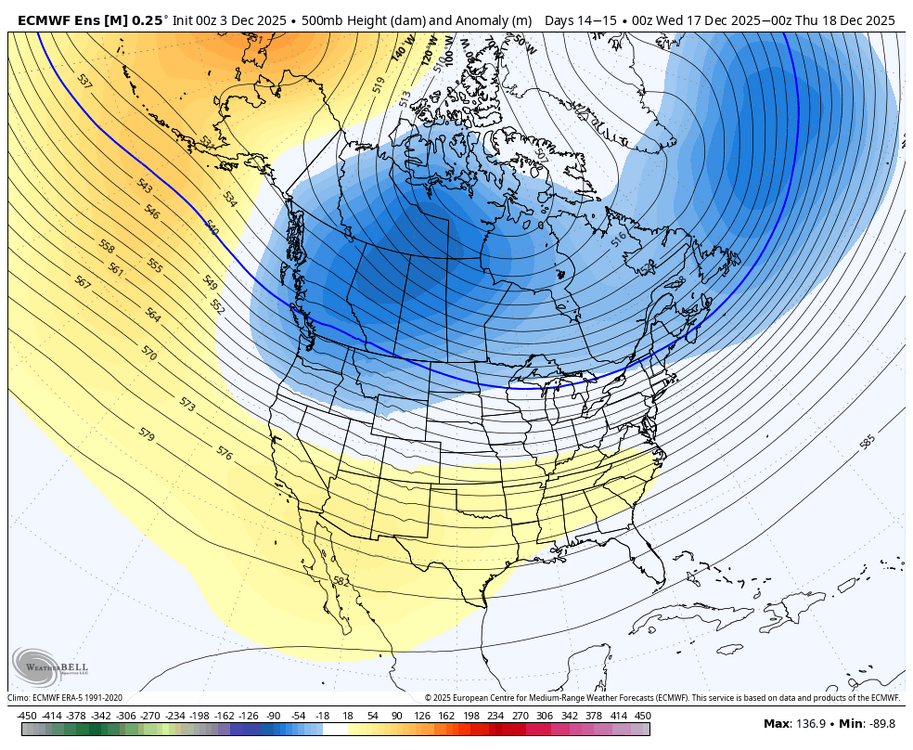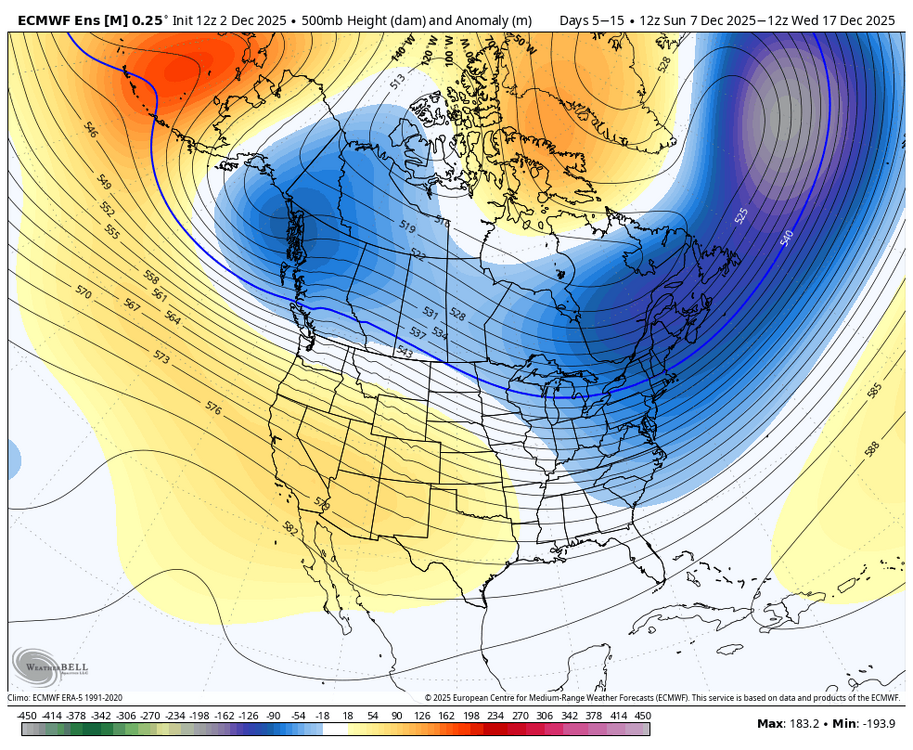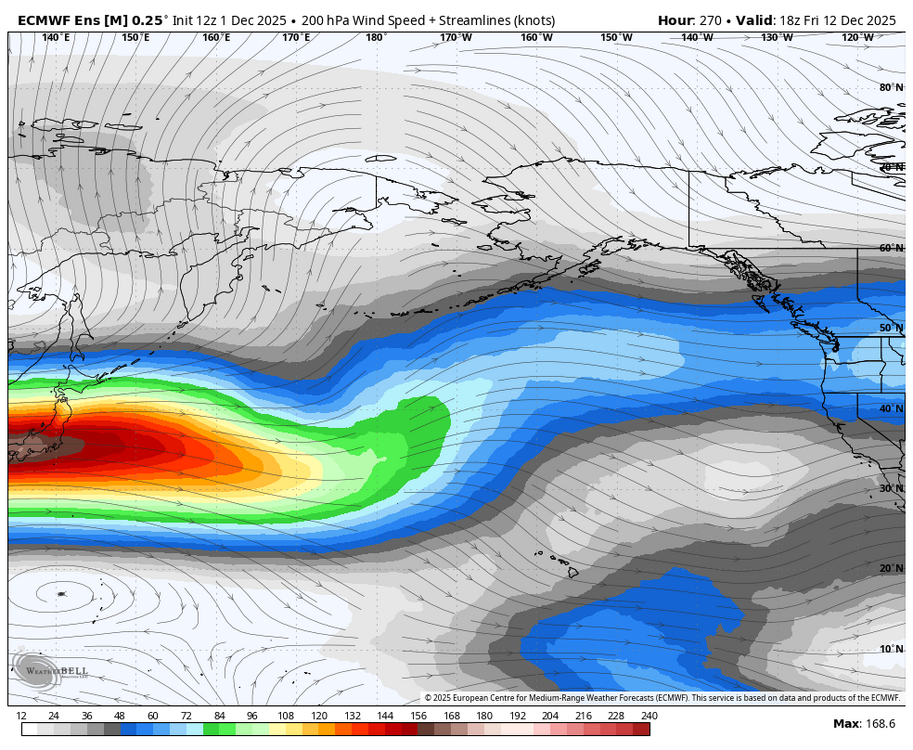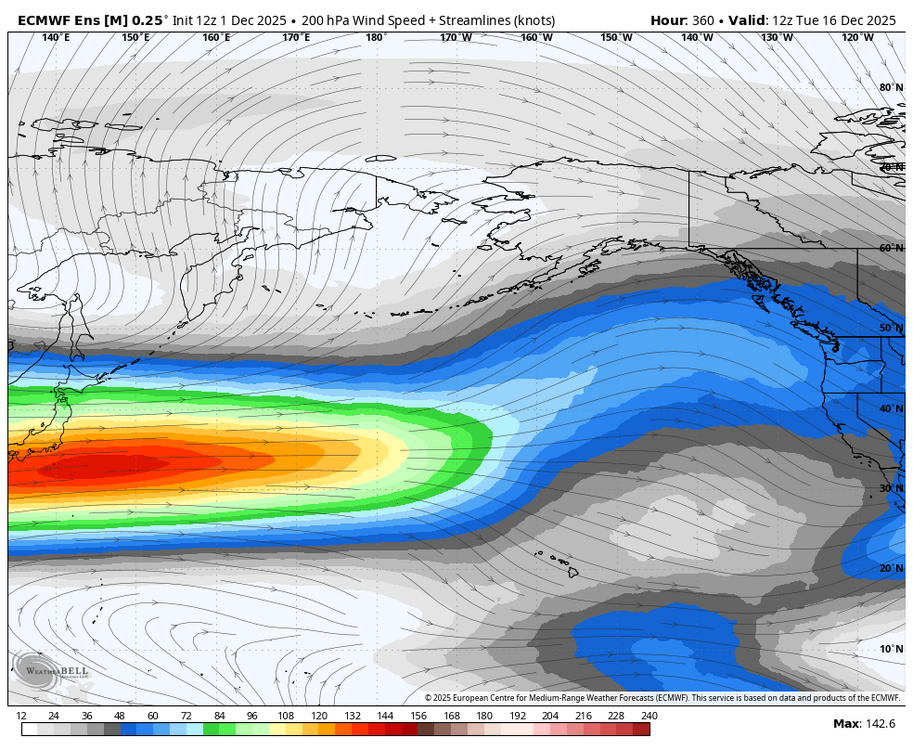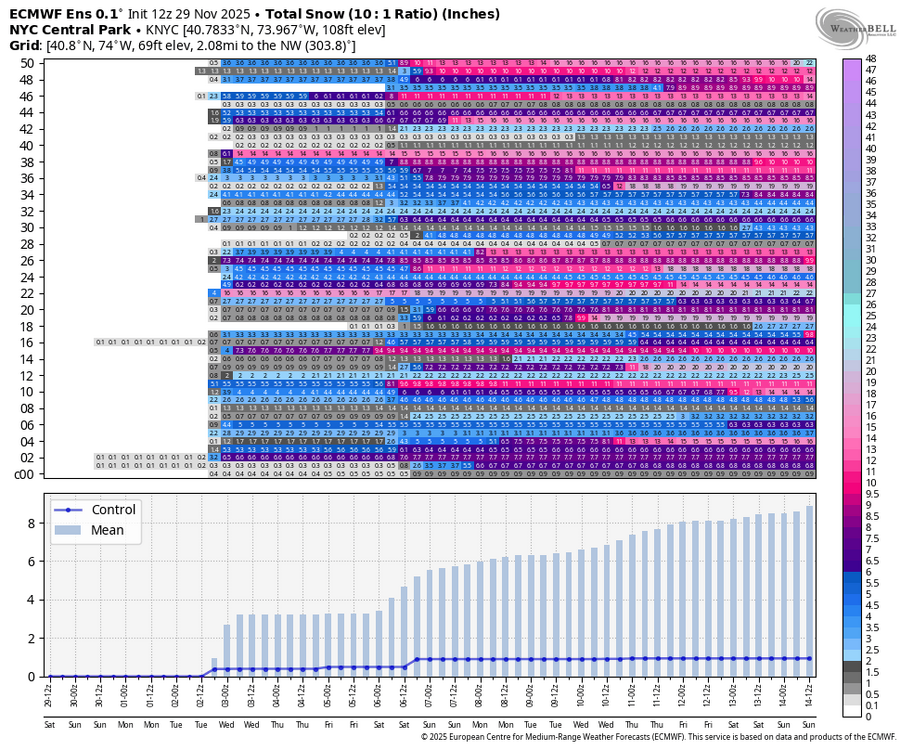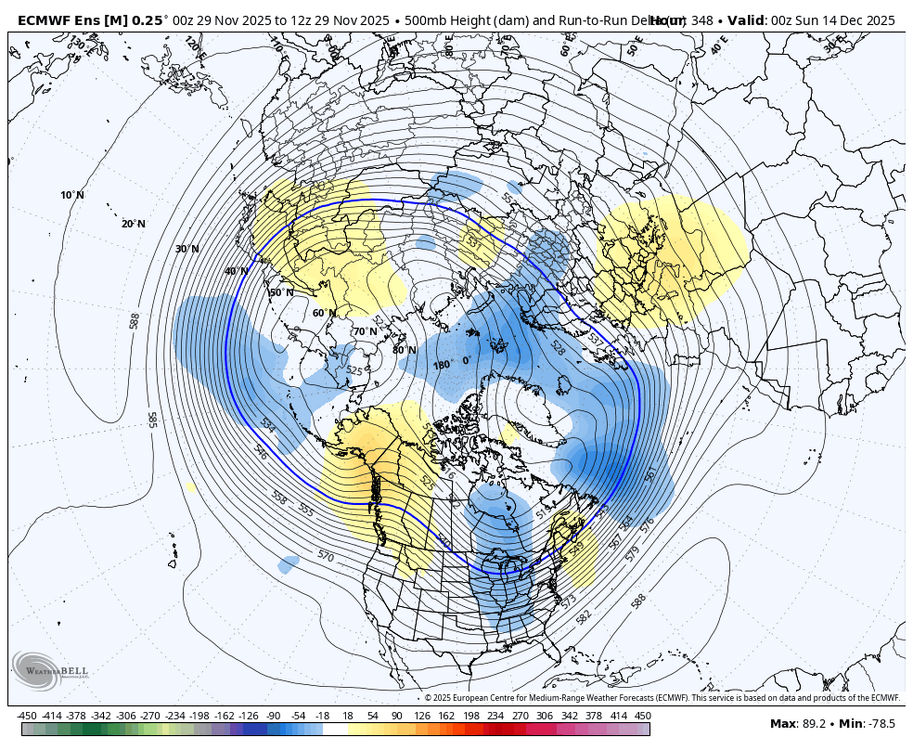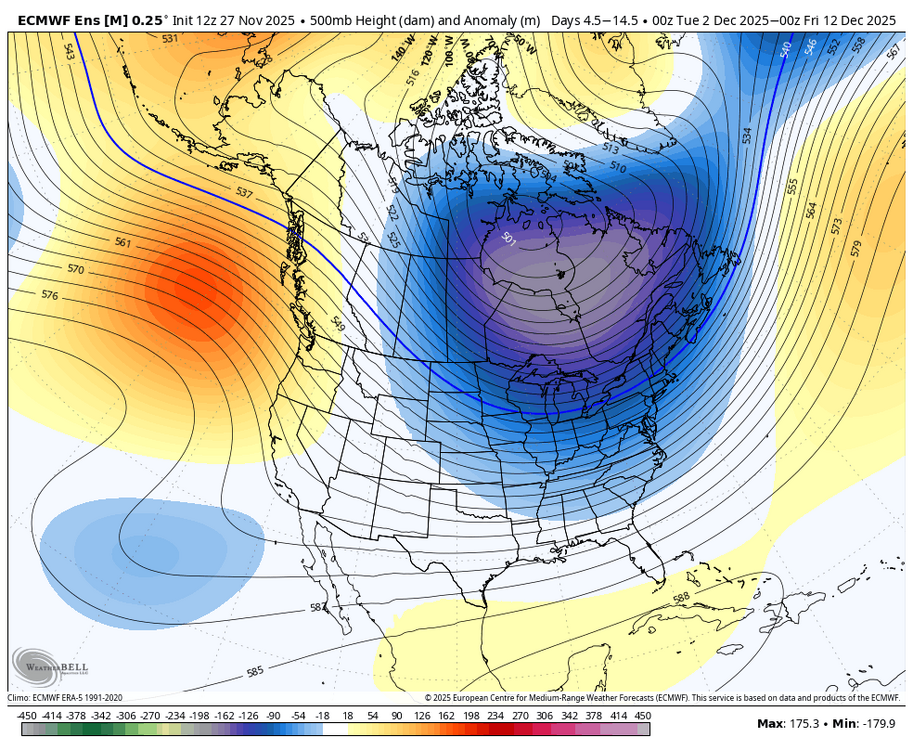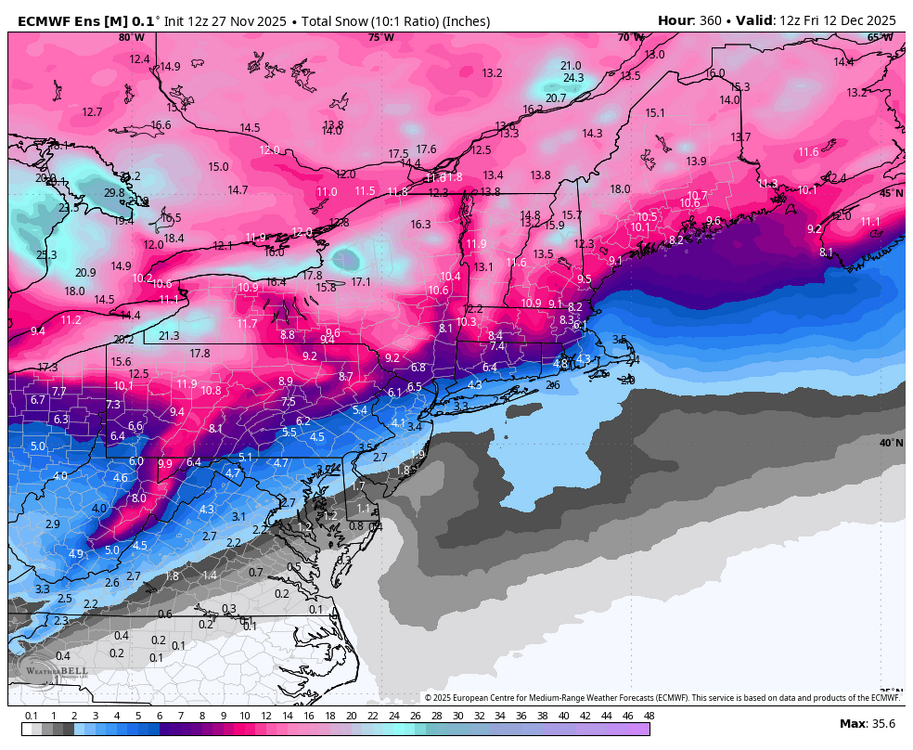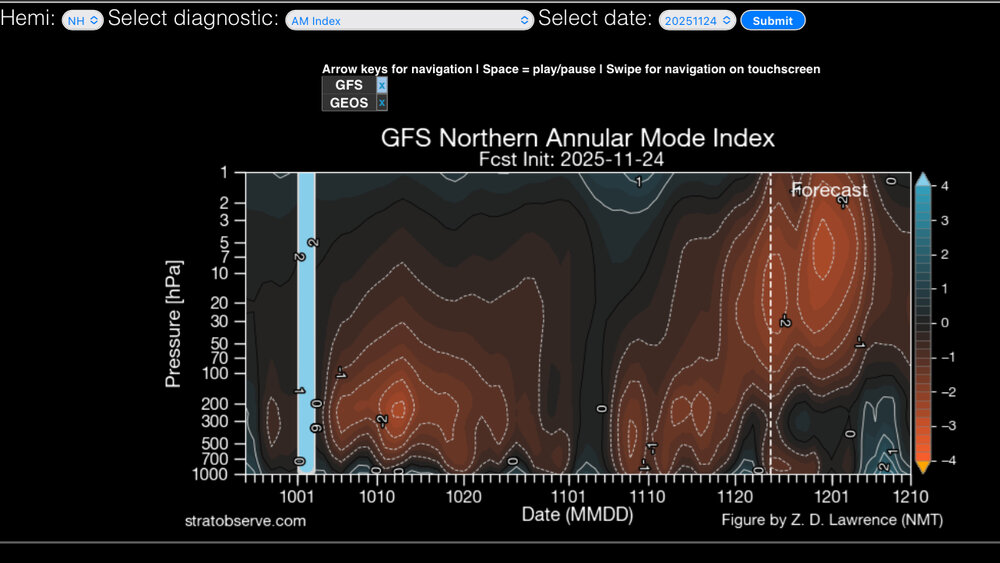-
Posts
967 -
Joined
-
Last visited
Content Type
Profiles
Blogs
Forums
American Weather
Media Demo
Store
Gallery
Everything posted by LakePaste25
-
Something to watch out for. If this materializes, it would trigger a positive East Asian Mountain Torque (+EAMT), which would extend the pacific jet and help push that aleutian ridge eastward towards the west coast (+PNA).
-
Agreed and makes sense. February here i’m expecting canonical Nina, which is usually a mixed bag of 60+ degree torches, rain/ice/sleet/snow overrunning events as the SE ridge waxes and wanes. January colder and mostly snow.
-
Yeah i guess my question is why we need the warm pool to extend east this year and not last year. For feb it makes sense. What is different about this January vs. last January when we had a +PNA?
-
Yeah and he even states this earlier. I’m not necessarily trying to call him out for being wrong but i’d like to know what has changed and is giving us a more canonical Nina.
-
You’re asking the same questions as I am. I asked him directly as well. The warm pool looks similar to last year unless i’m midreading something. Maybe it’s because the Nina itself looks stronger this year.
-
It’s important to note however that Eric Webb was calling for a similar pattern as last year back in November (+TNH). His main caveat is that -PNA episodes would be more frequent this year. So far that is the case, and if @40/70 Benchmark is right, we could improve things by mid Jan. The phase 8 hype was clearly over the top and the MJO entering phase 8 (and then collapsing into repeated fast-moving KW’s) is what is about to give us this pattern. You’d almost want to see the MJO re-emerging over the MC in phases 4-6 to enhance the standing convection over the Indo-pacific warm pool, which would inject some more momentum into the pacific jet and help nudge things eastward.
-
It is also one of the coolest stations during summer heatwaves due to the overgrown tree canopy, so this cuts both ways.
-
Classic CAD setup which denies the coast of the torch. So despite it being warm just about everywhere else, we’ll constantly hear about how it’s “not a torch” because the most important cities in America will be cooler.
-
the warm pattern is coming As expected, the cold pattern that was in place this month is unlikely to finish with any significant I-95 snowstorms (there will be a light/moderate event this weekend). The H5 pattern on the ensemble mean left little room for little amplification, and the EPS snow mean was not supportive. It’s always important to lean into the pattern before hyping big snowstorms with every cold pattern.
-
Models have been placing the block too far west, which impacts how much it bleeds into the EPO domain. Take the 11th-14 for example. A week ago, the EPS had a positive EPO for this time period. Now, it has a deeply negative EPO.
-
-
those could be coming next fall from the same suspects LOL
-
The medium range appears to show a more canonical La Niña pattern than we’ve seen from previous La Niña winters this decade, with a ridge over the GOA, cold in interior western Canada spreading eastward through the Great Lakes. Recent La Niña winters have shown extreme displacement of the North Pacific ridge from what is the typical location, with 2022-2023 featuring the ridge very far west (over the Aleutians), resulting in extremely heavy seasonal snows in the Sierra Nevadas (La Nina is normally dry there). 2024-2025 featured the north pacific ridge displaced much further east than usual, resulting in very high +PNA values and is very atypical for La Niña. It’ll be interesting to see if we experience more extreme displacements of the typical La Niña pattern this coming decade.
-
I still do not see any pattern that supports major I-95 snow through mid december. Nothing will dig with this. You’re looking at light events/sliders. Still favors Great Lakes/Interior the most.
-
I think it’s a downstream consequence of re-establishing the equatorward pacific jet and rebuilding the -EPO.
-
I think you are looking good for at least a light-moderate event in the city within the next 2 weeks.
-
It did. The euro shows a more alternating waveguide (with EPS support). Fast pac jet with some systems bombing into AK while another amps up the ridge behind it. I can’t show the animation due to file size limits.
-
Are you referring to Margavage? His primary audience are people with an IQ < 70, and those who are completely unaware of how meteorology works. Wouldn’t worry too much about those people. A dime a dozen. Grifters. Agreed with @brooklynwx99’s take on the -WPO, but I could see a trough that is not as deep as what is shown if the +EPO verifies stronger. I also don’t see a full blown CONUS torch happening.
-
Yes, there’s research out there that the Indo-pacific warm pool can contribute to western ridging/eastern trough, sometimes even independent of ENSO. Lots of research out on this topic: https://journals.ametsoc.org/downloadpdf/view/journals/clim/29/22/jcli-d-16-0145.1.pdf https://repository.library.noaa.gov/view/noaa/48389/noaa_48389_DS1.pdf
-
Walker circulation and yes. It’s why relative ONI (RONI) is used frequently here, because the eastern equatorial pacific warming relatively slower than the rest of the pacific is amplifying La Niña and also weakens the signal of El Niño to some extent. Walker circulation: https://www.climate.gov/news-features/blogs/enso/walker-circulation-ensos-atmospheric-buddy
-
It is due to climate change. The trade winds unevenly distribute the warmer water to the western pacific. This phenomenon only temporarily bounces back during El Niño years, and doesn’t even fully do this anymore. It’s here to stay.
-
10-day ensemble mean for early to mid December looks decent. More favored here in the interior/lakes due to climo, but also can’t rule out one or two a small events and/or front-end for I-95. For you I-95’ers, Boston on N is probably more favored for a moderate event or greater. We will have to see how things evolve.
-
-
Yeah, there’s no doubt that the warming climate is increasing the size of the SE ridge regardless of whether it gets over or under modeled. Ridges are getting larger and the breadth of below normal temps from troughs is getting smaller. These are just facts. doesn’t mean it can’t snow or get cold though. But in terms of getting the colder temps, it’s like spinning a prize wheel with less winning spaces to land on.
-
Fair but we also don’t verify a forecast with a forecast.

